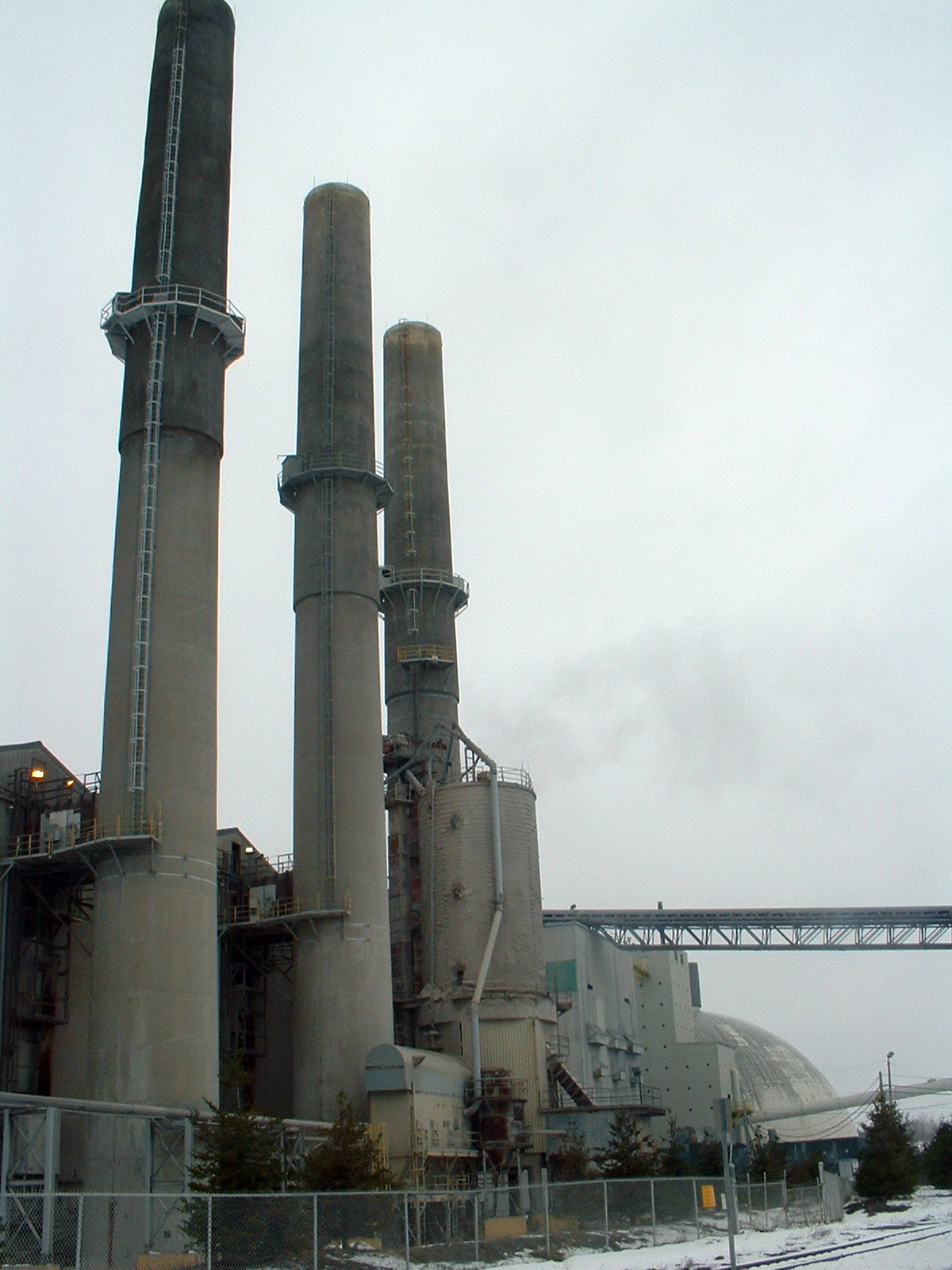Clickable map points show Great Lakes cement plants’ 2009 mercury emissions.
[pageview url=”http://maps.google.com/maps/ms?ie=UTF8&hl=en&t=p&msa=0&msid=103442662347384528219.00048d79ea28de367e6d3&ll=42.130821,-80.419922&spn=11.403169,25.488281&z=5&output=embed” width=”580″ height=”350″]
View Great Lakes states cement plant mercury emissions, 2009 in a larger map
The U.S. Environmental Protection Agency got tough on the nation’s cement plants this week, issuing new pollution standards that will force the industry to cut air emissions of soot and harmful chemicals like mercury.
The Great Lakes states’ 18 cement plants reported to the EPA a total 1167 pounds of mercury air emissions in 2009. Cement plants burn coal to cook limestone and other ingredients in big kilns. Coal and limestone both contain mercury that is vaporized and released in the kiln’s emissions.
Airborne mercury falls into lakes and contaminates fish. Eating too much mercury-laced fish can cause brain and kidney damage, especially in young children.
The rule is the final – and slightly less stringent – version of standards the EPA proposed in May 2009.
Read more about the details of the new rule on the New York Times’ Green blog and USA Today. Those eager to wade through the muck of the 461-page rule can find it here.
The EPA claims the rule will bring a bevy of reductions in unnecessary deaths and illnesses like chronic bronchitis, and those reductions will yield economic benefits that outweigh the cement industry’s costs of meeting the new standards:
“EPA estimates that the rules will yield $6.7 billion to $18 billion in health and environmental benefits, with costs estimated at $926 million to $950 million annually in 2013. “
But an American cement industry group says the rule could actually cause more health problems worldwide. Adopting control technologies could drive up the cost of American-made cement and push demand and production abroad to nations with less-stringent environmental regulations, according to Brain McCarthy, president and CEO of the Portland Cement Association.
“More cement will need to be imported to make up for shrinking domestic supply,” McCarthy said in a release. “We fear this could constrain the U.S. government’s efforts to stimulate the economy, create jobs and rehabilitate the nation’s infrastructure. Additionally, imports of cement, mostly likely from developing nations, will cause global increases of greenhouse gas, mercury and other pollutant emissions.”
The New York Times’ Green blogger Felicity Barringer frames the rule in terms of an Obama administration more eager to impose environmental regulations than its predecessors:
“While Obama-era regulations did not reach down to blowout preventers at the bottom of the Gulf of Mexico, they have reached cement kilns in a way that neither the Clinton nor the George W. Bush administrations had seemed willing or able to manage.”
But the new rule isn’t simply the result of a regime change. Environmental law firm Earthjustice sued the agency four times in an effort to force a cap on cement plant mercury emissions.
Earthjustice called the new standards “strong” in this release. The group also pointed to the Lafarge cement plant in northeastern Michigan as a particular problem:
The Alpena cement plant is of particular concern because it sits on the banks of Lake Huron and in close proximity to residential areas of Alpena.
“We’ve been living with the pollution from the Lafarge Cement plant in Alpena for decades,” said Bill Freese, director of the Huron Environmental Activist League, in a release issued by Earthjustice. “Cleaning up toxic air pollution from this cement plant and dozens more just like it across the country will mean cleaner air, fewer hospital visits, and better living for all.”
The Alpena plant was the biggest mercury polluter among Great Lakes states cement plants until 2009 when it was overtaken by the Buzzi Unicem USA, Inc. plant in Greencastle, Ind., according to EPA records.
The Greencastle plant reported 280 pounds of mercury emissions to the EPA in 2009. Though it was the worst mercury polluting cement plant, it was the 26th-worst mercury polluter over all. All but one of the 25 facilities that emitted more mercury were power plants.
2009 Great Lakes cement plant mercury emissions as reported to the EPA’s toxic release inventory:
| Facility Name | State | City | Pounds of mercury emitted |
| BUZZI UNICEM USA – GREENCASTLE PLANT | IN | GREENCASTLE | 280 |
| LAFARGE MIDWEST INC | MI | ALPENA | 270 |
| ESSROC CEMENT CORP | PA | NAZARETH | 129.7 |
| LEHIGH CEMENT CO | IN | MITCHELL | 128.41 |
| KEYSTONE CEMENT CO | PA | BATH | 83 |
| LEHIGH CEMENT CO – EVANSVILLE | PA | FLEETWOOD | 65 |
| LAFARGE MIDWEST INC JOPPA PLANT | IL | GRAND CHAIN | 39 |
| ST MARYS CEMENT INC (US) | MI | CHARLEVOIX | 34.63 |
| LAFARGE NA WHITEHALL PLANT | PA | WHITEHALL | 28 |
| ESSROC CEMENT CORP | PA | BESSEMER | 23 |
| ESSROC CEMENT CORP | IN | SPEED | 22.9 |
| LAFARGE NA (INCLUDING SYSTECH ENV CORP) | OH | PAULDING | 15 |
| ARMSTRONG CEMENT & SUPPLY CORP | PA | CABOT | 13.1567 |
| HOLCIM (US) INC – DUNDEE PLAN T | MI | DUNDEE | 12.45 |
| CEMEX INC FAIRBORN CEMENT PLANT | OH | XENIA | 9.083 |
| LEHIGH NORTHEAST CEMENT CO | NY | GLENS FALLS | 8.8 |
| BUZZI UNICEM STOCKERTOWN PLANT | PA | STOCKERTOWN | 5.78 |
| LEHIGH NORTHEAST CEMENT CO | NY | CATSKILL | 0.003 |
![]()
